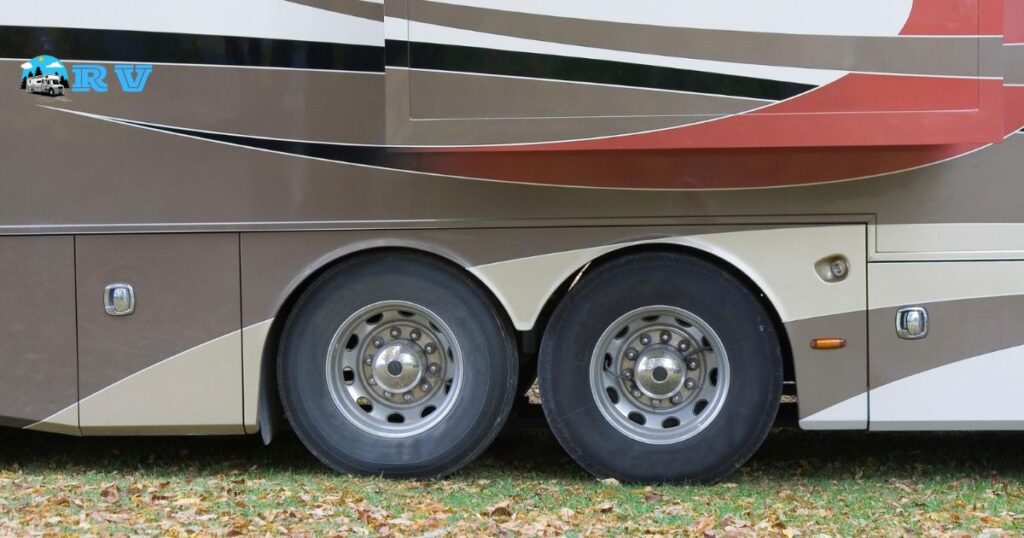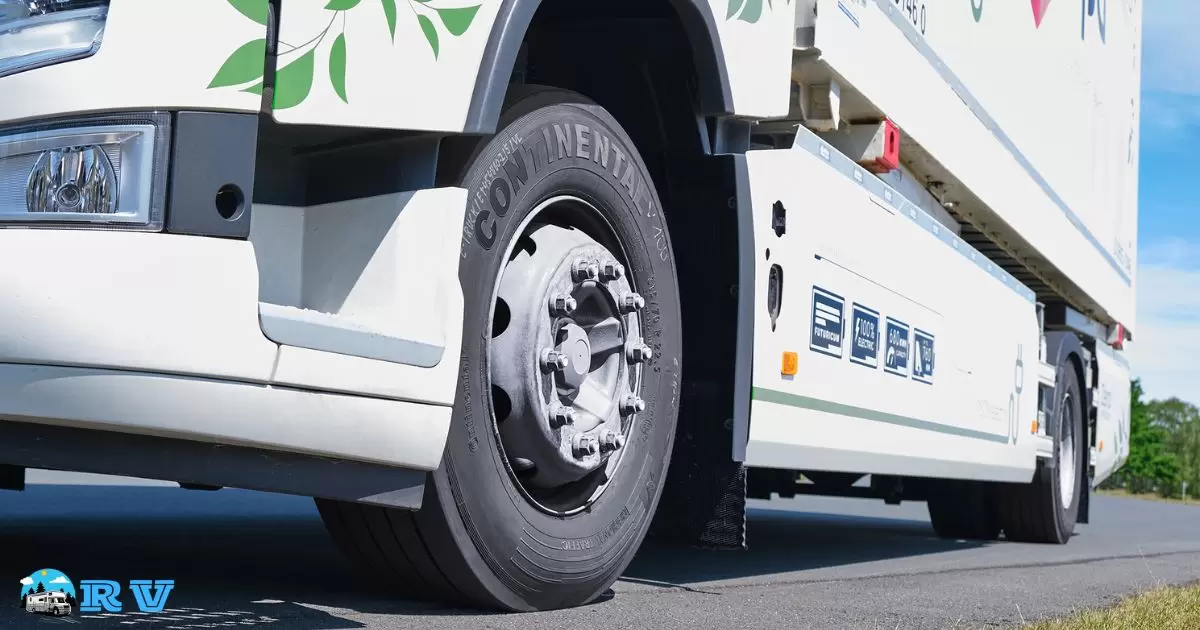RV tires are susceptible to dry rot, a condition that can significantly shorten their lifespan and compromise safety on the road. Dry rot occurs when the rubber in the tires deteriorates due to exposure to the elements.
Protecting your RV tires from dry rot is a top priority for RV owners. The question on everyone’s mind is, how to keep RV tires from dry rotting? This issue goes beyond mere inconvenience, as dry rot can lead to tire failure, stranding you on the road and potentially causing dangerous accidents.
To prevent dry rot in RV tires, it’s crucial to store your RV properly and protect your tires from prolonged exposure to sunlight and harsh weather conditions. Regularly inspecting your tires, maintaining proper tire pressure, and cleaning them with specialised products can also help extend their life.
What is Dry Rot in RV Tires?
Dry rot in RV tires is a common issue that can significantly impact the safety and performance of your recreational vehicle. Dry rot, also known as sidewall weathering, is a type of tire degradation that occurs over time. It is characterised by small cracks, checking, and a dried-out appearance on the tire’s sidewalls.
This degradation is primarily caused by prolonged exposure to sunlight and the elements, as well as the natural ageing of the tire’s rubber compounds. Dry rot weakens the structural integrity of the tire, making it more susceptible to blowouts, punctures, and reduced grip on the road.
How to Tell if My RV Trailer Tires Have Dry Rot?

Identifying dry rot in your RV trailer tires is crucial for ensuring your safety on the road. You can spot dry rot by closely inspecting the sidewalls of the tires. Look for small cracks or fissures on the rubber surface. These cracks may be superficial at first but can deepen and become more pronounced over time.
To perform a thorough inspection, you can use your fingers to gently press on the tire’s sidewall. If you notice any cracks or if the rubber feels brittle and flaky, it’s a clear indication that dry rot has set in. If you find any of these signs, it’s essential to address the issue promptly to prevent further deterioration.
Can I Drive with RV Trailer Tires That Have Dry Rot?
Driving with RV trailer tires that have dry rot is not advisable. Dry rot weakens the tire’s structure, making it more vulnerable to blowouts, punctures, and other tire-related issues. The safety of your RV and your well-being while on the road is at risk when driving with tires in this condition.
If you discover dry rot in your RV trailer tires, it’s crucial to replace them as soon as possible. Using compromised tires can lead to unexpected and potentially dangerous situations. Don’t take any chances; prioritise your safety and that of your passengers by addressing dry rot issues promptly.
How Often Do RV Tires Need to be Replaced?
| Factors Affecting Replacement Frequency | Recommended Replacement Interval |
| Type of Tires | Varies based on tire type and quality. |
| Frequency of RV Usage | Regular use may lead to shorter tire lifespan. |
| Maintenance | Proper maintenance can extend tire life. |
| Average Replacement Interval | Every 5 to 7 years, regardless of remaining tread. |
The frequency at which you need to replace your RV tires depends on various factors, including the type of tires you have, how often you use your RV, and how well you maintain them. On average, RV tires should be replaced every five to seven years, even if they appear to have sufficient tread remaining.
This is because the rubber compounds deteriorate over time, and dry rot can set in, compromising the tires’ integrity. Regular inspections are essential to catch signs of dry rot and other issues early. If you notice any problems during your inspections, don’t hesitate to replace the tires, as safety should be the top priority.
6 Tips to Prevent Your RV Tires from Dry Rot
- Keep your RV tires clean and free from dirt and debris.
- Store your RV in a shaded area or use tire covers to protect from the sun.
- Maintain proper tire pressure to prevent excessive strain on the rubber.
- Use tire conditioner or protectant to keep the rubber hydrated.
- Avoid parking your RV on grass or soil for extended periods.
- Move your RV periodically if it’s in storage to prevent flat-spotting.
How to Identify Dry Rot in RV Tires
Identifying dry rot in RV tires is essential for maintaining the safety and performance of your recreational vehicle. To spot dry rot, closely inspect the sidewalls of the tires. Look for small cracks or check on the rubber surface. These cracks may start small but can deepen over time. Check for a dried-out or brittle appearance on the tire’s surface.
To perform a thorough inspection, use your fingers to gently press on the tire’s sidewall. If you feel any cracks or if the rubber feels brittle and flaky, it’s a clear indication of dry rot. Regularly inspecting your RV tires can help you catch dry rot early and prevent potential accidents on the road.
What is the Life Expectancy of RV Tires
The life expectancy of RV tires varies depending on several factors, including the type of tires, the climate in which you store your RV, and how frequently you use it. On average, RV tires typically last between five to seven years. If your RV sits idle for long periods or is exposed to harsh environmental conditions, the tires may deteriorate more quickly.
When it comes to maintaining your RV, it’s important to check your tires regularly for signs of dry rot and other issues. If you’re looking to make the most out of your property, you might also consider the option to rent RV space on your property. If you notice any problems with your tires, don’t delay in replacing them to ensure your safety and the reliability of your RV while traveling.
FAQs
How can I prevent dry rot in my RV tires?
Preventing dry rot in RV tires involves storing your RV in a cool, shaded area, covering the tires to shield them from the sun, and regularly applying a tire conditioner to keep the rubber supple.
Are there any visual signs of dry rot I can look for?
Yes, dry rot signs include small cracks or checking on the tire’s sidewalls and a dried-out, brittle appearance. These are clear indicators of tire degradation.
Can I repair RV tires with dry rot?
No, it’s not safe to repair tires with dry rot. The best course of action is to replace them to ensure your safety on the road.
Is there a specific shelf life for RV tires, regardless of use?
Yes, RV tires should generally be replaced every five to seven years, even if they have sufficient tread left, due to rubber degradation.
Conclusion
In your quest to keep RV tires from dry rotting, remember that prevention is the key to a safe and enjoyable journey. Regular inspections, proper storage, and maintaining the correct tire pressure are your best allies in the battle against dry rot. By understanding the signs and risks associated with dry rot, you can act proactively to ensure the longevity and reliability of your RV tires.
Your RV adventures can be more worry-free when you stay vigilant and priorities tire health. Don’t underestimate the importance of well-maintained tires, as they play a crucial role in your on-road safety and comfort. Now armed with the knowledge to identify, prevent, and address dry rot, you’re better equipped to protect your investment and enjoy your travels with peace of mind.











